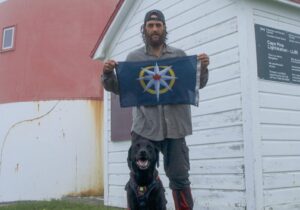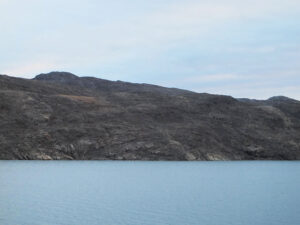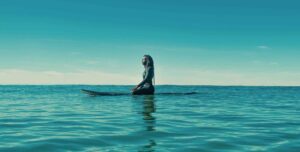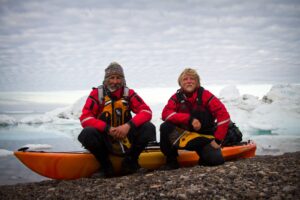Mungo Park (1771-1806) was one of the most celebrated explorers of his time. At a time of great maritime exploration, he was a pioneer of overland travel and one of the founders of modern travel writing. A Scottish surgeon and explorer, he was the first westerner to see the Niger River and return to tell the tale.
Born in Foulsheils, near Selkirk, Park was the seventh of 13 children. At 15, he became an apprentice for local surgeon, Thomas Anderson, whose daughter he would later marry. Three years later, he enrolled at Edinburgh University to study medicine, even though he was actually more interested in botany. Once he had completed his studies in 1792, he went to London to seek his fortune.
Park lived with his brother-in-law, James Dickson, a seedsman in Covent Garden. Dickson was well-connected and was a friend of Sir Joseph Banks, the famed botanist and explorer who had circumnavigated the world with Captain James Cook. Banks was impressed by Park and recruited him as a surgeon’s mate on a ship bound for Asia. But surgeon was really just a title; Park was actually there as a plant collector for Banks. In 1792-93, he gathered botanical and natural history specimens in Sumatra.
The trip to Sumatra awakened an appetite in Park for exploration and set the course for the rest of his short life. At the same time, a group called The Association for Promoting the Discovery of the Interior Parts of Africa was sponsoring expeditions to Africa. They wanted to determine the source and course of the Niger River, but their initial three expeditions had ended dismally. In a happy coincidence, Banks was the treasurer and unofficial director of the Association. Park volunteered to lead the fourth expedition, and because he had “a general passion for traveling”, his offer was accepted.

Mungo Park “in Sego, in Bambara”, an illustration from an 1833 anti-slavery book called An Appeal in Favor of that Class of Americans Called Africans.
The now 23-year-old Scotsman sailed for Africa early in 1795. His instructions were to “ascertain the course, and if possible, the rise and termination of the river”, and to be “a traveler of good temper and conciliating manners, who has nothing with him to tempt rapacity.” Essentially, he was sent into an unknown, hostile environment, where two of his predecessors had died, completely unarmed. The trip was not an easy one, and what was supposed to be “a short expedition” ended up taking 29 months. It overran so significantly that at home he was presumed dead.
In fact, Park soon reached Pisania, a settlement in what was then known as The Gambia. Here, he stayed for five months with Dr. John Laidley, a well-known slave trader. He had not intended to remain for such a long time, but was suffering from malaria and needed to recover.
At the end of 1795, he struck out on horseback with two servants. On their journey, they fell victim to many thefts and a lot of hostility. Park wore normal European clothing, which did not help them blend in. The only item of original clothing he returned with was his beaver hat; luckily this is where he kept his daily notes and journal.
They headed eastwards, toward Segou, a city known to be on the Niger River. Of his journey, Park later said that “although the African mode of living was at first unpleasant to me, yet I found, at length, that custom surmounted trifling inconveniences, and made everything palatable and easy.”
They covered over 500km and reached the Bambara states, where he was well received by the local leaders. But a militant Islamic group was gaining momentum in the area, and the Moors (desert-edge Muslim rulers) were threatening the Bambara communities.
Concerned, Park decided to divert his route to avoid danger, but his efforts were wasted. He ended up in Moorish territory, was captured and held prisoner. Believing he was a Christian spy, the Moors forced him to live with pigs, stole most of his belongings and deprived him of food and water. After holding him captive for three months, they allowed him to continue on, but he was forced to leave behind one of his servants, Demba, as a slave. He later tried to have Demba freed, but he never found out if he succeeded.
Park was still determined to find the Niger River, and finally reached its banks in July 1796. “I saw with infinite pleasure the great object of my mission; the long sought for, majestic Niger, glittering to the morning sun, as broad as the Thames at Westminster, and flowing slowly to the eastward,” he later wrote.
Although he had achieved his goal, the journey now went from bad to worse. He was denied entry to Segou, so he went on to Silla. Here, “worn down by sickness, exhausted by hunger and fatigue, half naked, and without any article of value”, he decided to turn back and try to return to The Gambia. Robbers stole his horse and most of his clothes. Undeterred, he carried on.
By this point, he was suffering once again from malaria. For once, luck was on his side, and a trader agreed to look after him and take him back to The Gambia. Here, he wangled his way onto an American slave ship –- their surgeon had died, and he offered himself as a replacement. He eventually returned to England, to find everyone shocked that he was still alive.

Mungo Park’s famous book of his adventures.
He proceeded to write an account of his travels, detailing his journey, the places he visited and their inhabitants. Travels in the Interior of Africa was a roaring success. Written in a straightforward style, it gave readers their first realistic description of life in West Africa. He noted the similarities and differences between Europeans and Africans, pointing out that those he met were generally just like him. Three editions were published within its first year, and it was immediately translated into French and German. It made Park famous, and he was now considered an expert on West Africa and exploration.
For the next few years, he lived a relatively quiet life in the Scottish Borders and married Allison Anderson in 1799. He reluctantly set up a medical practice in Peebles but he longed for a chance to travel again. He told his friend, Sir Walter Scott, that he “would rather brave Africa and all its horrors than wear out his life in long and toilsome rides over cold and lonely heaths and gloomy hills.” So when the African Association asked him to lead a government-sponsored expedition to Africa, the restless Park was more than happy to accept.

Thomas Rowlandson watercolour of Mungo Park, circa 1805.
Now a captain, Park sailed to The Gambia from Portsmouth in January 1805. He was to act as a representative of the British government and tasked with negotiating treaties with local rulers along the River Niger. He left with a party of 44, made up of soldiers, local guides and slaves. By the time they reached Bamako (now in Mali), only 11 survived. The rest had died of dysentery or fever. The expedition was a disaster and made his previous one look like a raging success, despite the malaria, robberies, imprisonment and near-starvation.
Resourcefully, he fashioned a boat from repurposed canoes and traversed the river. Unbelievably, they managed to travel over 1,600km along the Niger, withstanding various run-ins with wildlife and attacks from local people.
In a letter to the Colonial Office, he wrote, “I shall set sail for the East with the fixed resolution to discover the termination of the Niger or perish in the attempt. Though all the Europeans who are with me should die, and though I were myself half dead, I would still persevere, and if I could not succeed in the object of my journey, I would at least die on the Niger.”
In November, he wrote to his wife of his plans to sail by canoe to the mouth of the river. They would end up being his last letters.
Park never returned, and the British government employed the guide who delivered his last letters to find out his fate. There are some contradictory accounts of what happened, but the general story is one of heroic failure. Park is thought to have made it past Timbuktu, through Niger and into Nigeria. His decision not to ask for transit permission from local tribes and rulers led to a growing opposition against the foreign explorer. He fought off multiple attacks, but at the Bussa Rapids, the canoe became stuck on rocks. Local tribesmen attacked, and Park and the remaining three Europeans with him were drowned. The only survivor was a slave who was able to pass on details of how Park met his end. At just 35 years old, Park died as he wanted to, on the Niger, an explorer until the very end.
In 1827, his son Thomas traveled to the Niger to find out if his father was alive, perhaps as a prisoner somewhere, as he had been during his first journey to Africa. Thomas died of fever before making any great distance into the interior.






